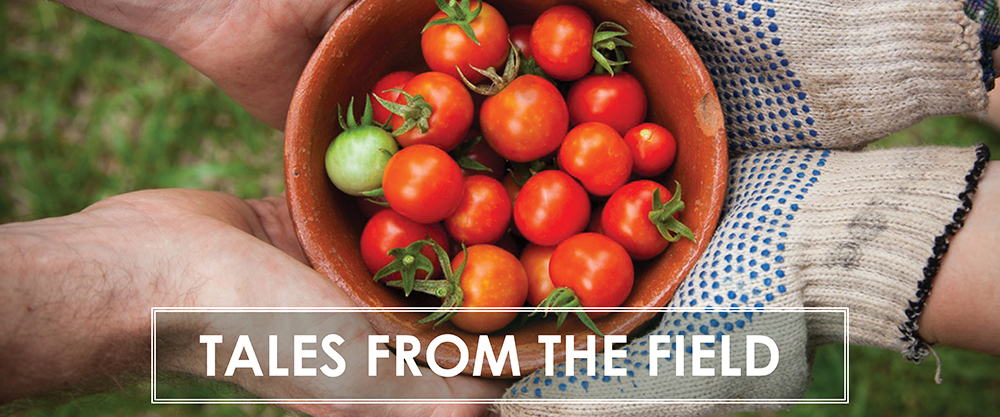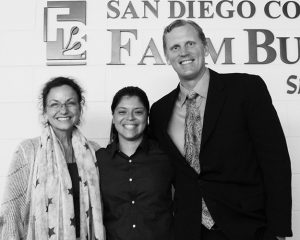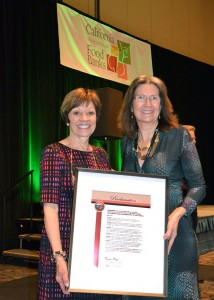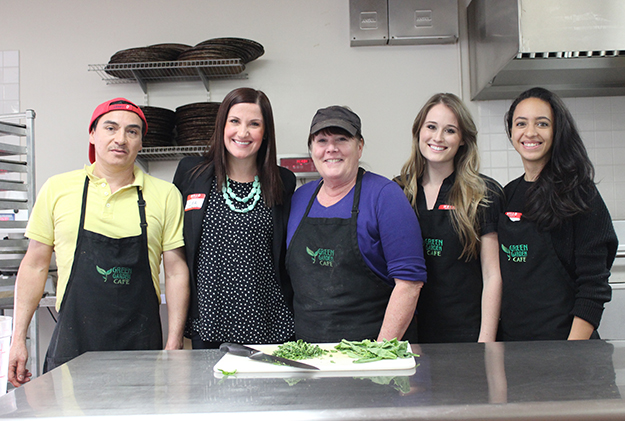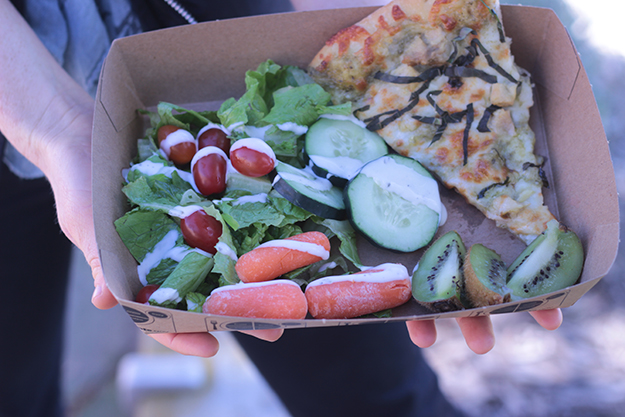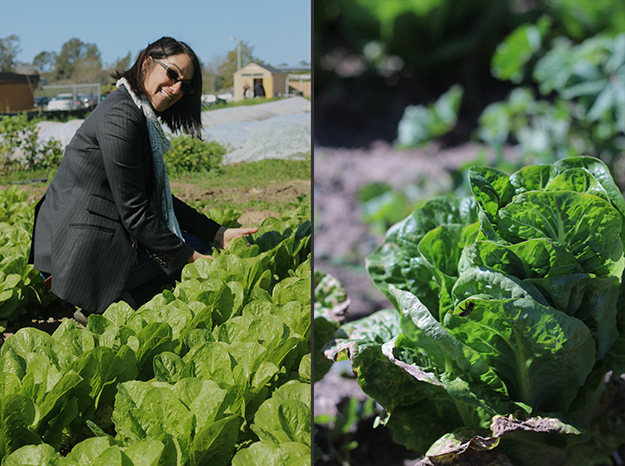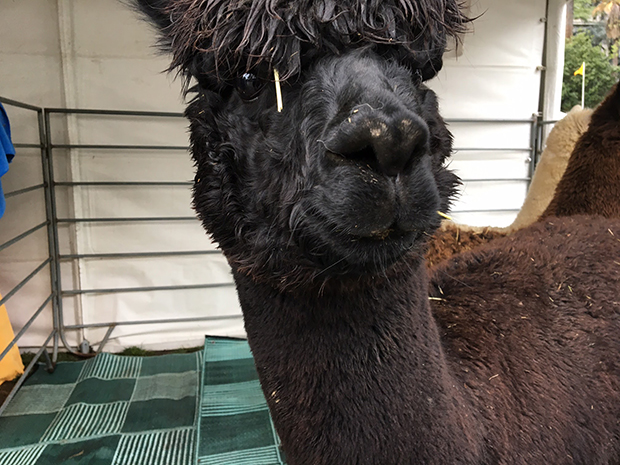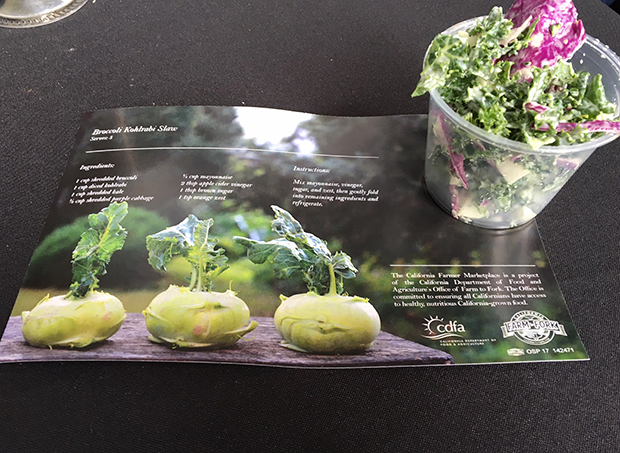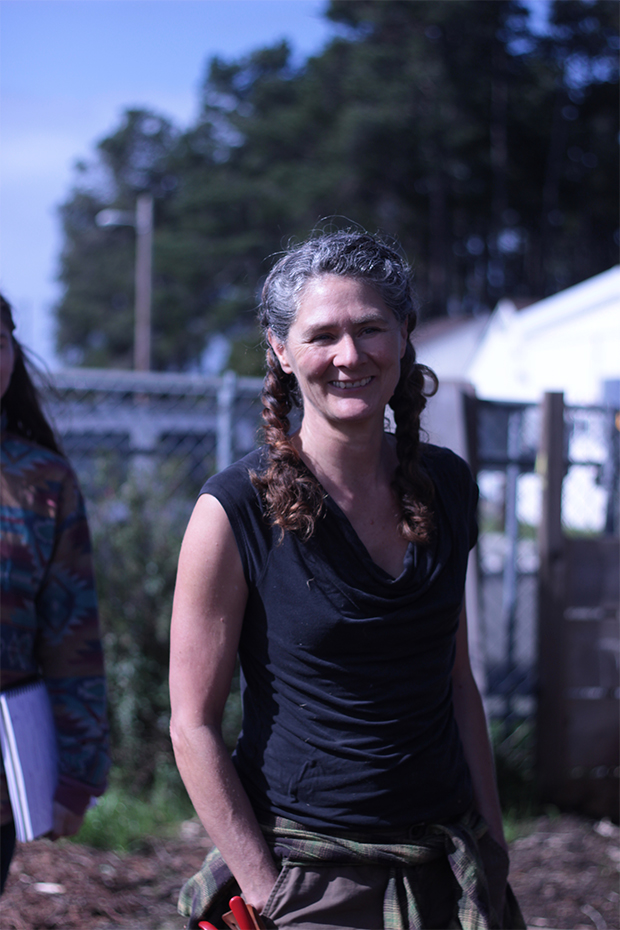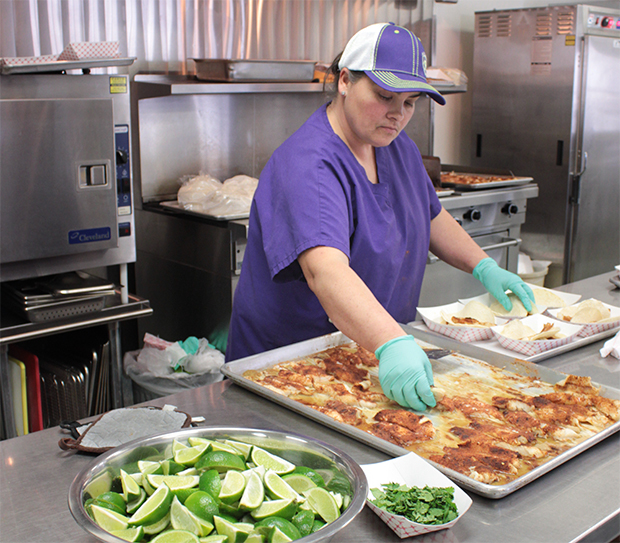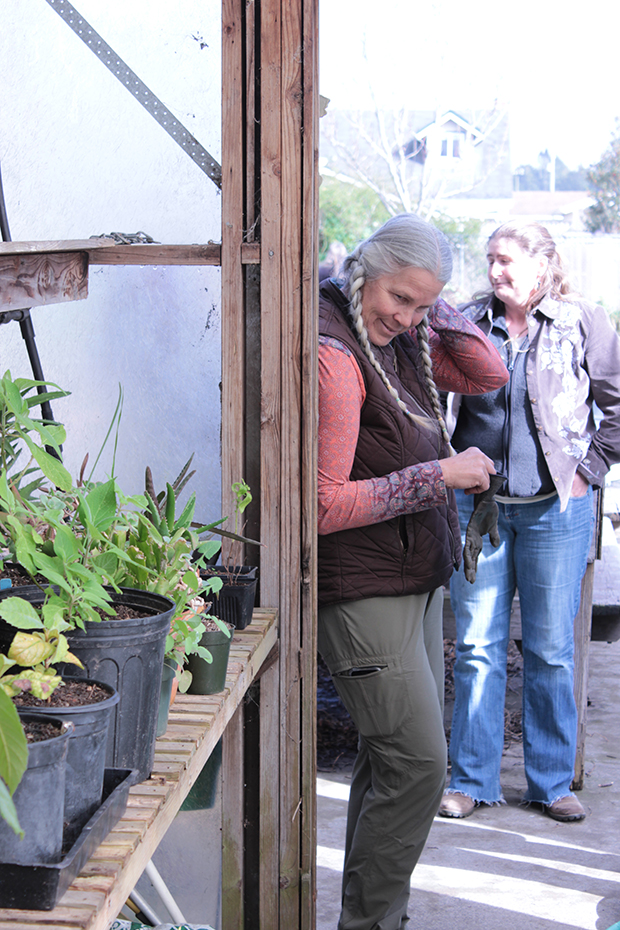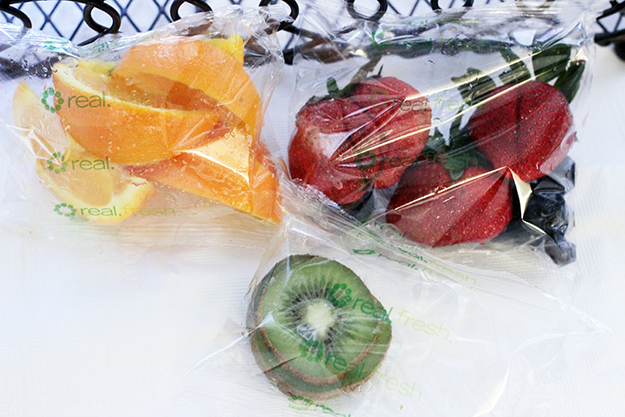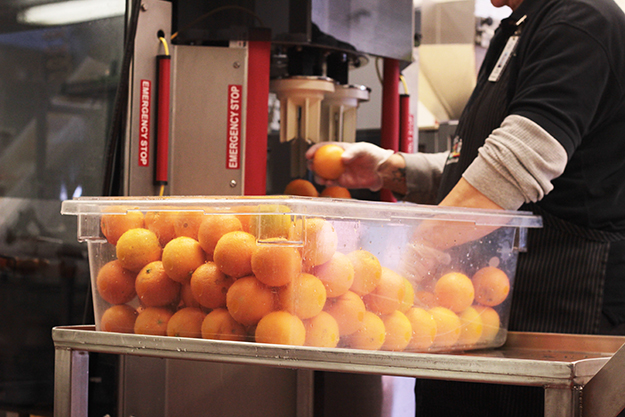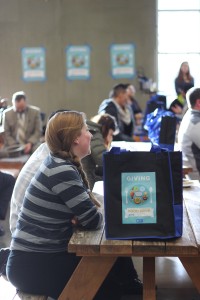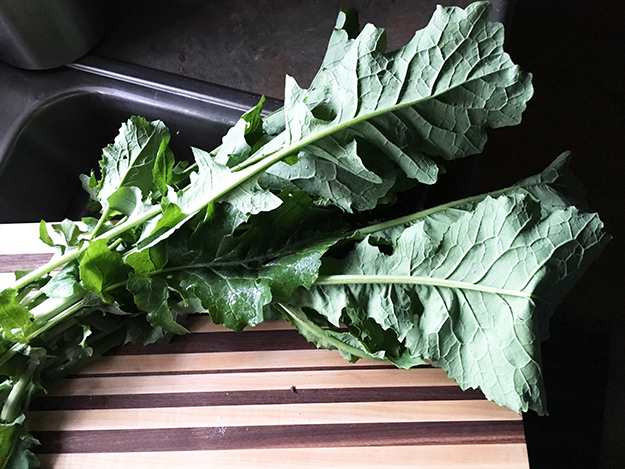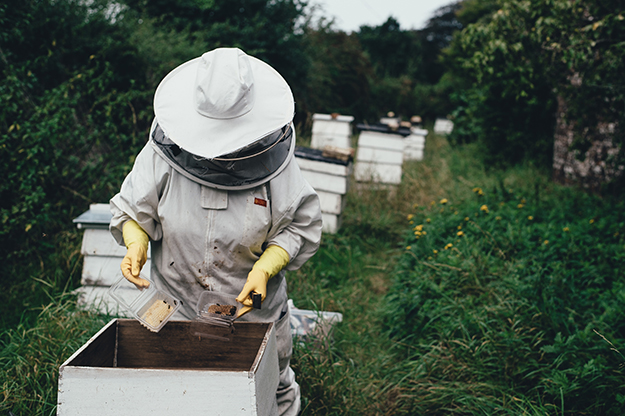
Students come to Archi’s Institute for Sustainable Agriculture with a passion for food, agriculture, and learning. The institute provides a 6 or 12 week course that teaches methods of organic and hydroponic specialty crop production. Many students also come with a future business plan in mind. During the course, the Office of Farm to Fork asked our Farm to Fork Ambassadors to share lessons learned and any new ideas or modifications they have made to their plans. This blog post shares their journey, as students review the materials they have learned, compare to their current project concepts, and prepare for the capstone event, where they present to an evaluation panel, comprised of local farmers, nonprofit groups, and business incubators. Evaluators measure each student’s project viability, motivating students to work out budget kinks and practice their pitches for weeks ahead of time.
Michael Lupacchino
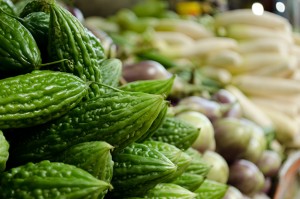 One of the lessons learned during the training is niche marketing and targeting for the type of product one is going to sell to his or her consumers. I chose the bitter melon for my business plan because I see the potential for economic benefit for the farmer. By targeting niche neighborhood and businesses that use the bitter melon, one can make this plant a profitable crop. Because I’m Filipino, I know how hard it is to find a constant supply of fresh bitter melon in commercial supermarkets in the United States. Bitter Melon is a niche crop that requires a niche consumer, but there is a growing Asian demographic in this country.
One of the lessons learned during the training is niche marketing and targeting for the type of product one is going to sell to his or her consumers. I chose the bitter melon for my business plan because I see the potential for economic benefit for the farmer. By targeting niche neighborhood and businesses that use the bitter melon, one can make this plant a profitable crop. Because I’m Filipino, I know how hard it is to find a constant supply of fresh bitter melon in commercial supermarkets in the United States. Bitter Melon is a niche crop that requires a niche consumer, but there is a growing Asian demographic in this country.
The state of California has one of the largest demographics of Filipinos within the United States. Based on the competition, bitter melon would be a profitable crop if grown in the farming areas of San Diego, Los Angeles and San Francisco regions of California. If grown in the Central Valley of California, crops could be sold in 4 regions with large Filipino communities (San Diego, Los Angeles, San Francisco, Las Vegas). The state with surprising potential is Northern Alaska and Anchorage, Alaska regions. One or two green houses in Alaska could possibly supply the bitter melon demand and make a profit for the Anchorage region of Alaska. A feasibility study needs to be conducted before submitting a business plan for growing bitter melon in a climate controlled green house in Alaska. Bitter melon needs temperatures between 75 to 80 degrees to flourish. The short growing season and the Alaskan temperatures could prevent this crop from growing when exposed to the Alaskan weather and elements.
Joe Laguna
 This week I will be using the material I learned on how to grow berries, which I will grow. After going to the farmer’s market for months now, watching the vendor next to us, it is obvious the strawberry market is more than good. Fruit trees have always been very important to our family and way of life. We plan to have peach, apple, oranges, apricot and cherry to start with.
This week I will be using the material I learned on how to grow berries, which I will grow. After going to the farmer’s market for months now, watching the vendor next to us, it is obvious the strawberry market is more than good. Fruit trees have always been very important to our family and way of life. We plan to have peach, apple, oranges, apricot and cherry to start with.
The business plan lessons can now take center stage. It is rather nerve racking, knowing that so much can be accomplished with a good business plan and the confidence in things I’m learning about the farming business.
We went to the OC conference today and the main message I received was sustainability and urban farming. I learned there are several high schools in the Orange County area that have a garden on campus. I think that is great. Kids should need to know where their food comes from. I also met with Dr. Nat Storey of Bright Agrotech. I have been watching his YOUTUBE channel for 4 or 5 years now. I think his aquaponics system is great and he is taking steps in teaching us all about closed loop sustainability.
With a week to go in the class and most of us chomping at the bit to get started, it’s good to know I’m running with the right crowd.
Dara Morgen
 My current studies have again helped to reshape my plans moving forward. As I mentioned in my first post, my plan changed from a therapy farm to a focus on raising seedings (aka plugs) and bee farming. Upon learning more, I am focusing towards the specialty crop of organic honey and products made with beeswax. There are two issues that I see as obstacles when raising honey farms. The first being predators. As discussed in class, there are many predators of the honeybee. The hunters are praying mantises, wasps, hornets, and aggressive parasites such as mites. Specific geographical locations have high populations of these predators, such as my home state of Texas, which is one of my secondary farm locations after proving the concept within California.
My current studies have again helped to reshape my plans moving forward. As I mentioned in my first post, my plan changed from a therapy farm to a focus on raising seedings (aka plugs) and bee farming. Upon learning more, I am focusing towards the specialty crop of organic honey and products made with beeswax. There are two issues that I see as obstacles when raising honey farms. The first being predators. As discussed in class, there are many predators of the honeybee. The hunters are praying mantises, wasps, hornets, and aggressive parasites such as mites. Specific geographical locations have high populations of these predators, such as my home state of Texas, which is one of my secondary farm locations after proving the concept within California.
The second issue that I have learned about is the extensive record keeping required for beekeepers. There are bee brokers, owner-lessee, farm managers, pest control advisers, and pesticide applicators that need to be considered. Each year, beekeepers in California are required to register their hive locations with the county agriculture commissioners and should notify the commissioners of substantial movement to receive notifications for pesticide applications. This helps the grower to know of other hives within a one-mile radius of their farm. While this will help with collecting data on the supply/demand aspect of the farm and better forecast profits, this seems like a tremendous amount of work for a first time beekeeper. Hopefully, I am just letting my initial nerves of venturing out on my own get the best of me.
In regards to the best practices guide, I have also learned that the best way to learn beekeeping is to work with an experienced mentor who has successfully kept bees in your area for many years. Through Archi’s Acres, I have meet several classmates that are current beekeepers. This relationship has allowed me to learn from them, to better assess the needs of establishing a farm, as well as helping me to determine the best location within southern California to establish my farm. Murritea, Riverside or Temecula are at the tip of my list. I am also learning about “treatment free” beekeeping, which has an extremely low yield. In addition, I am also learning to practice good bee husbandry.
Alyssa Ponce
 Throughout the four weeks of my six week course I’ve learned what hydroponic farming is, the types of systems used and the importance of understanding market demand. After multiple changes, I’ve finally decided to focus my business plan on organic baby bok choy cabbage and baby kale. For my production, I plan to build a hoop house utilizing an active nutrient film technique (NFT).
Throughout the four weeks of my six week course I’ve learned what hydroponic farming is, the types of systems used and the importance of understanding market demand. After multiple changes, I’ve finally decided to focus my business plan on organic baby bok choy cabbage and baby kale. For my production, I plan to build a hoop house utilizing an active nutrient film technique (NFT).
Hydroponic farming is the growing of plants in sand, gravel, or liquid with added nutrients but without soil. I’ve learned at Archi’s Acres on our Farm Days the first thing to do is check the water. By using an electric pen, it helps to provide us with the pH levels, electrical conductivity (ec) and temperatures in the water reservoirs. The next thing we do is enter the greenhouse and observe all the lines to ensure none are clogged. We check lines before and after class because any clogged lines can put a crop at risk.
Inside my hoop house I plan to grow organic baby bok choy, cabbage, and baby kale. Bok choy is ready in about 30 days and harvesting can be done all season long. Kale is ready 70 to 80 days from seed and can also be available all year round. Bok choy and kale are in high demand in local restaurants in San Diego County, so that might be a market I want to target. I have learned a lot in the last four weeks and will learn more to enhance my business plans.
This post is part of a series featuring Farm to Fork Ambassadors from Archi’s Institute for Sustainable Agriculture. Students chosen by the Office of Farm to Fork will share their stories and the journey many like them are taking to create a new career path in farming after leaving the military in three blog posts here on Tales from the Field. Many of the students are exploring niche markets in California by developing business plans to grow less traditional fruits and vegetables or to support often overlooked populations.
 The California Department of Food and Agriculture’s (CDFA) Office of Farm to Fork is pleased to announce that they are one of 65 USDA Farm to School grantees spanning 42 states and Puerto Rico receiving support this year through the U.S. Department of Agriculture’s (USDA) Farm to School Grant Program. The Grant Program is part of USDA’s effort to better connect school cafeterias and students with local farmers and ranchers.
The California Department of Food and Agriculture’s (CDFA) Office of Farm to Fork is pleased to announce that they are one of 65 USDA Farm to School grantees spanning 42 states and Puerto Rico receiving support this year through the U.S. Department of Agriculture’s (USDA) Farm to School Grant Program. The Grant Program is part of USDA’s effort to better connect school cafeterias and students with local farmers and ranchers.